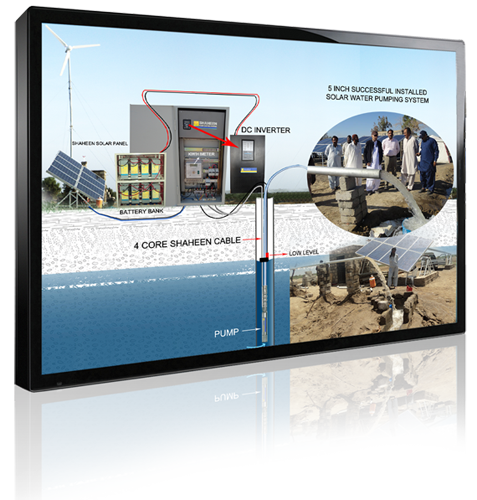ENERGY CRISES AND PAKISTAN
An energy crisis is any great shortfall (or price rise) in the
supply of energy resources to an economy. It usually refers to the
shortage of oil and additionally to electricity or other natural
resources.
The crisis often has effects on the rest of the economy, with many
recessions being caused by an energy crisis in some form. In
particular, the production costs of electricity rise, which raises
manufacturing costs.
For the consumer, the price of gasoline (petrol) and diesel for cars
and other vehicles rises, leading to reduced consumer confidence and
spending, higher transportation costs and general price rising.
Future and alternative sources of
energy
Some experts argue that the world
is heading towards a global energy crisis due to a decline in
the availability of cheap oil and recommend a decreasing
dependency on fossil fuel. This has led to increasing interest
in alternate power/fuel research such as fuel cell technology,
hydrogen fuel, biomethanol, biodiesel, Karrick process, solar
energy, tidal energy and wind energy. To date, only
hydroelectricity and nuclear power have been significant
alternatives to fossil fuel (see Future energy development),
with big ecological problems (residues and water spending).
Hydrogen gas is currently produced at a net energy loss from
natural gas, which is also experiencing declining production in
North America and elsewhere. When not produced from natural gas,
hydrogen still needs another source of energy to create it, also
at a loss during the process. This has led to hydrogen being
regarded as a 'carrier' of energy rather than a 'source'.
There have been alarming predictions by groups such as the Club
of Rome that the world would run out of oil in the late 20th
century. Although technology has made oil extraction more
efficient, the world is having to struggle to provide oil by
using increasingly costly and less productive methods such as
deep sea drilling, and developing environmentally sensitive
areas such as the Arctic National Wildlife Refuge. The world's
population continues to grow at a quarter of a million people
per day, increasing the consumption of energy. The per capita
energy consumption of China, India and other developing nations
continues to increase as the people living in these countries
adopt western lifestyles. At present a small part of the world's
population consumes a large part of its resources, with the
United States and its population of 296 million people consuming
more oil than China with its population of 1.3 billion people.
Efficiency mechanisms such as Negawatt power can provide
significantly increased supply. It is a term used to describe
the trading of increased efficiency, using consumption
efficiency to increase available market supply rather than by
increasing plant generation capacity.
Energy Crisis In Pakistan
Energy resources have depleted!
Whatever resources are available are simply too expensive to buy or
already acquired by countries which had planned and acted long time
ago. Delayed efforts in the exploration sector have not been able to
find sufficient amounts of energy resources. Nations of the world
which have their own reserves are not supplying energy resources
anymore; only the old contracts made decades ago are active.
Airplanes, trains, cars, motorbikes, buses and trucks, all modes of
transportation are coming to a stand still. Many industries have
closed due to insufficient power supply. Price of oil has gone above
the ceiling. At domestic level, alternate methods like solar, biogas
and other methods are being tried for mere survival.
The above is a likely scenario of Pakistan and around the globe
after 25 years. A pessimistic view, but realistic enough to think
about and plan for the future. But are we doing anything about it?
Lets have a look at the current energy situation of Pakistan and the
world.
Pakistan?s economy is performing at a very high note with GDP
growing at an exceptional rate, touching 8.35% in 2004-05.In its
history of 58 years, there has been only a few golden years where
the economy grew above 7%. This year official expectations are that
GDP growth rate will be around 6.5 ? 7.0%. For the coming years, the
government is targeting GDP growth rate above 6%. With economy
growing at such a pace, the energy requirements are likely to
increase with a similar rate. For 2004-05, Pakistan?s energy
consumption touched 55.5 MTOE (Million Tons of Oil Equivalent).
The energy consumption is expected to grow at double digit if the
overall economy sustains the targeted GDP growth rate of 6% by the
government. Pakistan?s energy requirements are expected to double in
the next few years, and our energy requirements by 2015 is likely to
cross 120MTOE. By 2030, the nation?s requirement will be 7 times the
current requirement reaching 361MTOE. Pakistan?s energy requirements
are fulfilled with more than 80% of energy resources through
imports.
On the other hand, international oil prices have not only broken all
records but are touching new highs, with every news directly or
indirectly affecting the black gold industry. Moreover, speculators
all around the world expect oil prices to touch $100 per barrel in
medium term. With concerns over Iran?s nuclear program, terrorist
issues in Nigeria and high economic growth in China & India and
their ever rising energy requirements, oil prices don?t see any
another way but to shoot upwards.
What is the government doing to ensure a sustainable supply of
energy resources for economic growth? What strategic steps are being
taken to acquire energy resources in future? Is private sector
willing to invest in Pakistan?s oil industry? What are the
incentives being offered to the foreign players to continue working
in the exploration sector? What hurdles are stopping other big
players around the world to enter Pakistan? What is the role of gas
distribution companies so far? Are the citizens of Pakistan being
robbed by energy giants with ever rising utility bills? What should
be the real price of petroleum, kerosene and other oil products in
Pakistan? When will the nation have ?load shedding free? electric
supply? Have we been able to make long term contracts with the
countries to provide uninterrupted supply of energy resources? Will
the government be able to provide enough sources to the citizens for
a sustainable economic growth? Have we lost the race for acquiring
maximum energy resources for future survival?

Photo credit: The Nation News
Pakistan: Power crisis feared by
2007
The country may plunge into energy
crisis by the year 2007 due to rising electricity demand which
enters into double digit figure following increasing sale of
electrical and electronic appliances on lease finance, it is
reliably learnt Thursday.
?The country may face energy crisis by the year 2007 following
healthy growth of 13 per cent in electricity demand during the last
quarter, which will erode surplus production in absence of
commissioning of any new power generation project during this
financial year,? informed sources told The Nation.
As per Pakistan Economic Survey 2003-04, electricity consumption has
increased by 8.6 per cent during first three-quarter of last fiscal
year. However, a top level WAPDA official maintained that
electricity demand surged up to 13 per cent during last quarter.
The survey said household sector has been the largest consumer of
electricity accounting for 44.2 per cent of total electricity
consumption followed by industries 31.1 per cent, agriculture 14.3
per cent, other government sector 7.4 per cent, commercial 5.5 per
cent and street light 0.7 per cent.
Keeping in view the past trend and the future development, WAPDA has
also revised its load forecast to eight per cent per annum as
against previous estimates of five per cent on average. Even the
revised load forecast has also failed all assessments due to which
Authority has left no other option but to start load management this
year, which may convert into scheduled load shedding over a period of
two year, sources maintained.
The country needs a quantum jump in electricity generation in
medium-term scenario to revert the possibilities of load shedding in
future due to shrinking gap between demand and supply of electricity
at peak hours.
According to an official report, the gap between firm supply and
peak hours demand has already been shrunk to three digit (440 MW)
during this fiscal and will slip into negative columns next year
(-441 MW) and further intensify to (-1,457 MW) during the financial
year 2006-07.
The report maintained that the difference between firm supply and
peak demand is estimated at 5,529 MW by the year 2009-10 when firm
electricity supply will stand at 15,055 MW against peak demand of
20,584 MW.
Chairman WAPDA Tariq Hamid at a Press conference early this year
warned about the possible energy crisis and stressed the need for
?quantum jump? in power generation. The experts say it could only be
possible through a mega project of hydropower generation, otherwise
the gap between firm supply and peak demand will remain on the rise.
They said the power generation projects, which are due to commission
in coming years are of low capacity and will not be able to exceed
the surging demand of the electricity.
They say no power generation project will commission during this
fiscal year and the total installed capacity of electricity
generation will remain 19,478 MW to meet 15,082 MW firm supply and
14,642 MW peak demand.
Giving details of projects, the sources said Malakand-lll (81MW),
Pehur (18MW) and combined cycle power plant at Faisalabad (450MW)
are planned to be commissioned during the year 2007. Mangla Dam
raising project would also add 150 MW capacity to the national grid
by June 2007. Besides this, Khan Khwar (72MW), Allai Khwar (121MW),
Duber Khwar (130MW) and Kayal Khwar (130MW) are expected to be
completed in 2008 along with Golan Gol (106MW) and Jinnah (96MW).
Moreover, Matiltan (84MW), New Bong Escape (79MW) and Rajdhani
(132MW) are expected by 2009 while Taunsa (120MW) is likely to be
completed by 2010.
Sources say WAPDA has also planned to install a high efficiency
combined cycle power plant at Baloki (450MW), which is expected to
be completed by 2010. In addition of these, power plant 1 & 2 of 300
MW each at Thar Coal with the assistance of China are also planned
for commissioning in 2009, sources said. Moreover, efforts are also
under way with China National Nuclear Corporation for the
construction of a third nuclear power plant with a gross capacity of
325 MW at Chashma, they added.
When contacted, a WAPDA official said there is no power shortage in
the country at present as the Authority still has over 1,000 MW
surplus electricity. However, he admitted that the shortage may
occur in the year 2007 and onward and said the Authority will
utilize all options including running of IPPs plant at full capacity
to avert any possible crisis.
About the system augmentation to bring down line losses, the
official said the Authority would spend Rs 3.5 billion on
augmentation of distribution lines this fiscal while another Rs 5
billion will be consumed on transmission lines. ?We have been
negotiating Rs 9 billion loan with a consortium of local banks to
upgrade and augment the power transmission system,? he disclosed.
The official further said that five new transmission lines of 220-KV
would be installed by the end of 2004, that would ensure smooth
supply to the consumers. He expressed full trust on present
transmission and distribution system and said it could easily
sustain the load of total installed power generation in the country
Source:
CSS Forum, Daily Dawn





 state-of-the-art designSolar Water Pumping System
state-of-the-art designSolar Water Pumping System Wind Power Use itdon't let it blow away!
Wind Power Use itdon't let it blow away!







 Most Experienced inSolar, Wind and Hybrid Technology
Most Experienced inSolar, Wind and Hybrid Technology SOLARBattery BanksShaheen Enterprise
SOLARBattery BanksShaheen Enterprise Water PUMP SystemShaheen Enterprise'sFeature Project
Water PUMP SystemShaheen Enterprise'sFeature Project
